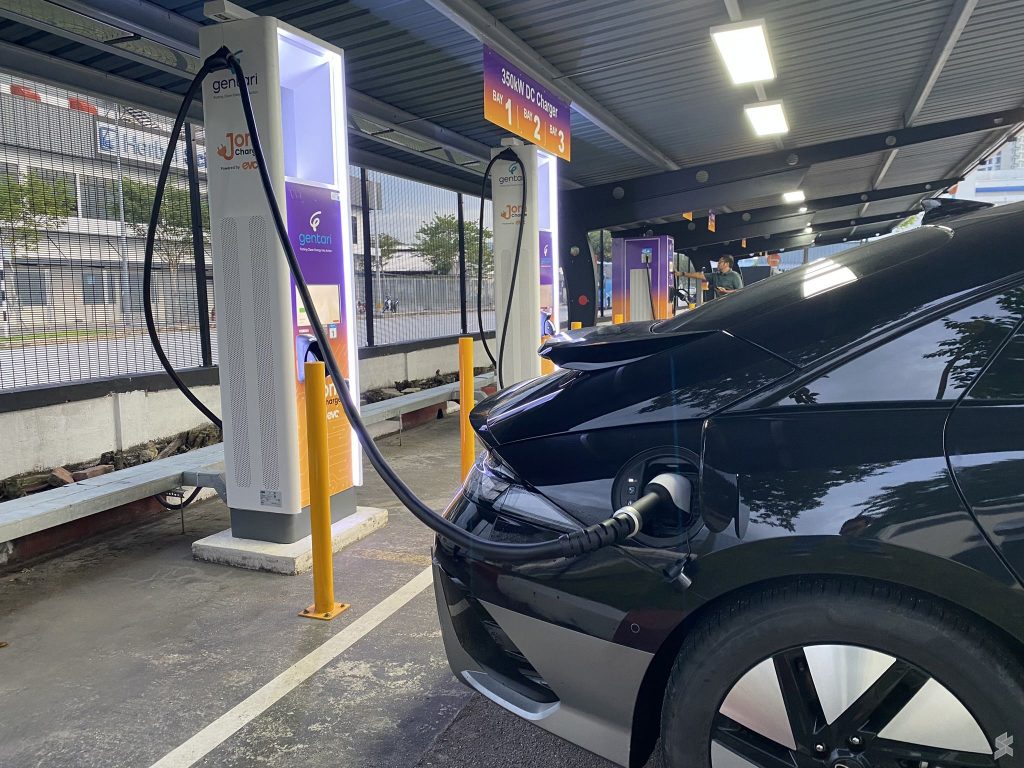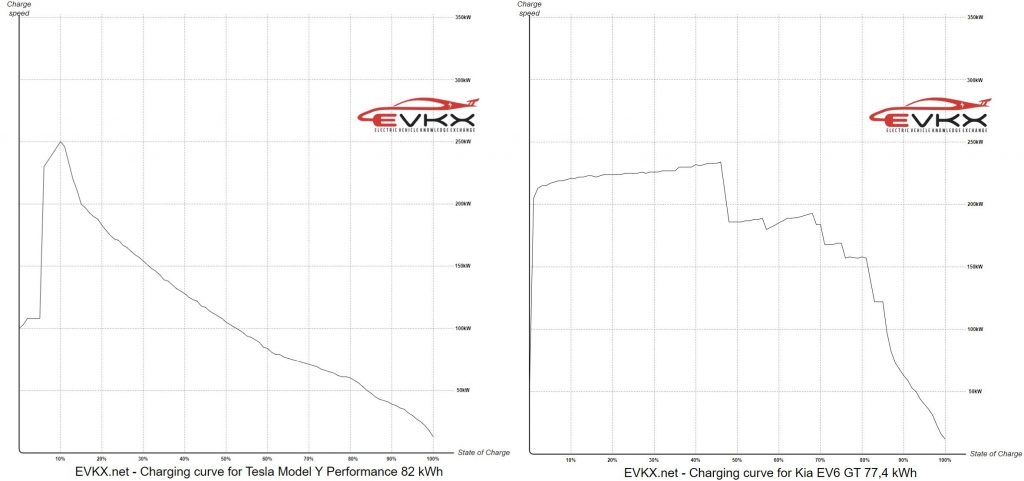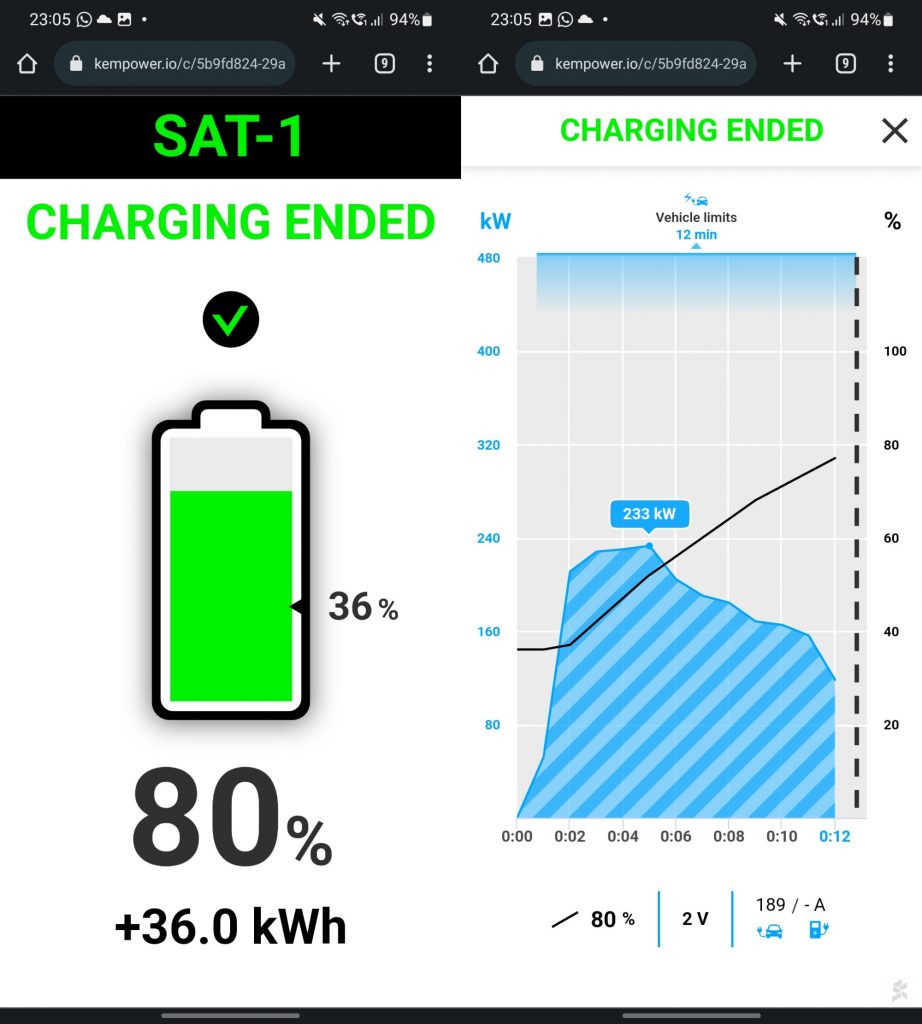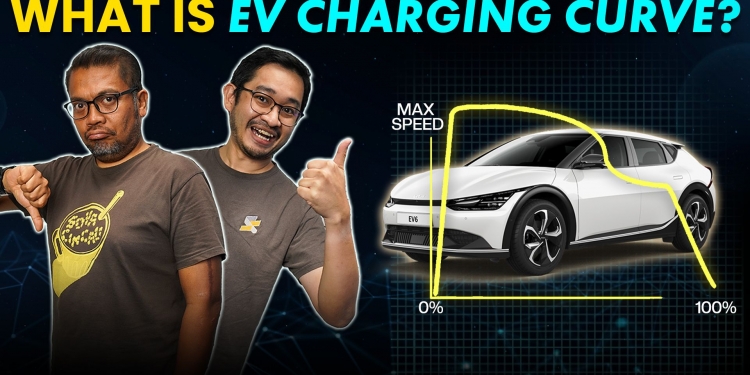When people talk about charging their electric vehicles (EV), most people boast about the maximum DC charging power possible. The higher the kW number, the faster the battery gets topped up, or so logic dictates. But just because one car can hit a higher peak power figure than another doesn’t mean it automatically wins out as there’s something called the EV charging curve.
In this episode of Let’s Talk About, Amin and Alex discuss EV battery voltage (800V vs 400V) and how that affects the charging curve that ultimately determines how soon you can unplug your car and drive off.
What is an EV charging curve?

Similar to smartphones, you can’t get the maximum fast charging rate from 0-100% on an EV. If you look around, most smartphones and EV manufacturers boast a fast charging rate at a limited range such as 0-50% or 20-80%. When the State of Charge (battery %) gets higher, the fast charging rate slows down gradually to protect the battery. This is to prevent overheating and to improve the overall lifespan.
The charging curve pattern is similar to filling up a theatre hall or an aircraft with people. You can fill up half the seats quickly in the beginning but eventually, it gets slower to fill the remaining seats.
However, this charging curve typically applies for DC fast charging at higher rates above 30kW. If you’re charging at a slower rate with AC such as 7-22kW, the charging rate is constant as it isn’t putting as much stress on the battery. That’s one of the reasons why it is better to use AC charging for your regular day-to-day charge and only use DC fast charging sparingly when required such as a long-distance road trip.

When EV manufacturers advertise their DC fast charging speed, you can often see claims such as up to 100kW or up to 275kW. In reality, the maximum charging rate achievable depends on several factors which include the charger, your EV’s supported fast charging speed, the EV battery’s State of Charge as well as the temperature.
Most manufacturers don’t reveal the charging curve for their vehicles which actually affects the overall time spent at the charger. In the case of the Tesla Model Y Performance, it can do a maximum of 250kW when plugged into a Tesla Supercharger. However, looking at the charging curve (illustrated above), it could only due 250kW for a short period of time before it starts tapering down sharply. By 50%, it could only do about 100kW which is less than half of its advertised charging speed. In case you missed it, we’ve also covered why you may not get the maximum 250kW charging rate at a Tesla Supercharger in Pavilion KL.
However, if you have an EV with an 800V battery architecture such as a Hyundai Ioniq 5, Hyundai Ioniq 6, Kia EV6, Porsche Taycan, Audi e-Tron GT or the Lotus Eletre, it can sustain the fast charging rate for an even longer period of time. As shown in the graph above, the Kia EV6 can sustain over 200kW charging up to 50% and it continues to maintain over 150kW until it reaches around the 80% mark.
As a result, the Kia EV6 can get a 10-80% charge in just 18 minutes while a Tesla Model Y takes about 30 minutes for a similar charge. With a higher 800V battery, the DC fast charger pushes a lower current (Amp) which helps to reduce heat and makes the charging more efficient than an EV with a 400V battery being charged at a higher current.
Why you shouldn’t DC fast charge beyond 80%?

The biggest mistake most EV first-timers tend to make is to fast charge their cars up to 100% like a petrol car. Not only this is a waste of time but it is also very expensive. With the EV charging curve in mind, it typically takes a longer time to charge from 80-100% than 10-80%.
If you’re fast charging at a per-minute DC charger like Shell Recharge along the north-south highway, you could easily spend over RM100 if you’re charging it wrong. As highlighted in our EV long-distance guide, it is better to just charge what you need and continue the journey, than waiting for your EV to charge to full. A quick 15-20 minute DC fast charge is probably all you need. As a rule of thumb, it is best to DC fast charge up to 80%. Unless you absolutely need the extra range especially if you’re driving an EV with a tiny battery.
Related reading
- Did we get everything wrong about Tesla? We respond to Tesla Fans | Let’s Talk About #126
- iPhone 15 and iPhone 15 Pro: Boring update or game changer? | Let’s Talk about #127
- Over 1,200km with the Hyundai Ioniq 6: Here’s how much we spent on EV charging
- How to travel long-distance with an Electric Vehicle in Malaysia?








